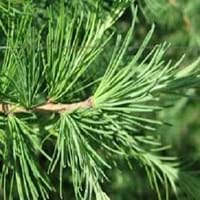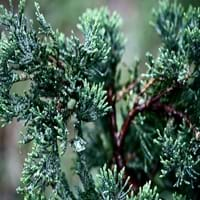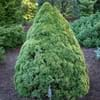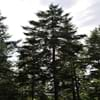Life Span
Perennial
Perennial
Type
Needled or Scaled Evergreen
Needled or Scaled Evergreen
Origin
Eastern Europe, Northern Europe, Russia/Siberia, Central Asia, Nepal, China
North America
Types
not available
Juniperus brevifolia, Juniperus cedrus, Juniperus deltoides
Habitat
Cold Regions
Dry areas, Moist Soils, Well Drained
USDA Hardiness Zone
1-5
3-9
Sunset Zone
A1, A2, A3, 1a, 1b, 2a, 2b
A1, A2, A3, 1a, 1b, 2a, 2b, 3a, 3b, 4, 5, 6, 7, 8, 9, 10, 11, 12, 13, 14, 15, 16, 17, 18, 19, 20, 21, 22, 23, 24
Habit
Upright/Erect
Prostrate/Trailing
Flower Color
Green, Red, Yellow
Not Available
Flower Color Modifier
Bicolor
Bicolor
Fruit Color
Brown, Yellow
Not Available
Leaf Color in Spring
Light Green
Blue Green
Leaf Color in Summer
Light Green
Blue Green
Leaf Color in Fall
Yellow
Blue Green
Leaf Color in Winter
Not Available
Purple, Blue Green
Leaf Shape
Needle like
Needle like
Plant Season
Spring, Summer, Fall
Spring, Summer, Fall, Winter
Sunlight
Full Sun, Partial Sun
Full Sun, Partial Sun
Type of Soil
Clay, Loam, Sand
Clay, Loam, Sand
The pH of Soil
Acidic, Neutral, Alkaline
Acidic, Neutral, Alkaline
Soil Drainage
Average
Well drained
Bloom Time
Not Available
Not Available
Tolerances
Drought
Drought
Where to Plant?
Ground
Ground
How to Plant?
Seedlings
Cuttings, Softwood cuttings
Plant Maintenance
Medium
Medium
Watering Requirements
Keep the Soil well drained
Average Water Needs
In Summer
Lots of watering
Lots of watering
In Spring
Moderate
Moderate
In Winter
Average Water
Average Water
Soil pH
Acidic, Neutral, Alkaline
Acidic, Neutral, Alkaline
Soil Type
Clay, Loam, Sand
Clay, Loam, Sand
Soil Drainage Capacity
Average
Well drained
Sun Exposure
Full Sun, Partial Sun
Full Sun, Partial Sun
Pruning
Prune to control growth, Remove damaged leaves, Remove dead branches, Remove dead leaves
Remove damaged leaves, Remove dead branches, Remove dead leaves, Requires very little pruning
Fertilizers
All-Purpose Liquid Fertilizer
All-Purpose Liquid Fertilizer
Pests and Diseases
Armillaria root rot, larch sawfly, Needle rust
Red blotch
Plant Tolerance
Dry Conditions
Drought
Flower Petal Number
Single
Single
Foliage Texture
Fine
Fine
Foliage Sheen
Matte
Glossy
Attracts
Rodents
Wildlife
Allergy
Unknown
Not Available
Aesthetic Uses
Landscape Designing, Showy Purposes, Woodland margins
Borders, Ground Cover
Beauty Benefits
Not Available
Not Available
Environmental Uses
Air purification
Air purification, Provides ground cover, Wildlife
Medicinal Uses
Unknown
Diaphoretic, Febrifuge, Kidney problems
Part of Plant Used
Not Available
Not Available
Other Uses
Application in Furniture
Incense, useful as a ground cover
Used As Indoor Plant
No
No
Used As Outdoor Plant
Yes
Yes
Garden Design
Feature Plant
Container, Edging, Groundcover, Rock Garden, Wall
Botanical Name
LARIX sibirica
JUNIPERUS horizontalis 'Wiltonii'
Common Name
Siberian Larch
Blue Rug Juniper
In Hindi
Siberian Larch
Blue Rug Juniper Grass
In German
Sibirische Lärche
Blauer Teppich Juniper Grass
In French
Mélèze de Sibérie
Bleu Tapis Juniper Herbe
In Spanish
Larix sibirica
Alfombra azul Juniper Hierba
In Greek
siberian larch
Μπλε κουβέρτα Juniper Grass
In Portuguese
siberian larch
O tapete azul Juniper grama
In Polish
Modrzew syberyjski
Niebieski dywan Jałowiec Trawa
In Latin
Siberian larch
Blue Rug Juniperus Grass
Phylum
Pinophyta
Coniferophyta
Class
Pinopsida
Pinopsida
Family
Pinaceae
Cupressaceae
Clade
Not Available
Not Available
Tribe
Not Available
Not Available
Subfamily
Not Applicable
Not Available
Number of Species
Not Available
Not Available
Importance of Siberian Larch and Blue Rug Juniper
Want to have the most appropriate plant for your garden? You might want to know the importance of Siberian Larch and Blue Rug Juniper. Basically, these two plants vary in many aspects. Compare Siberian Larch and Blue Rug Juniper as they differ in many characteristics such as their life, care, benefits, facts, etc. Every gardener must at least have the slightest clue about the plants he wants to plant in his garden. Compare their benefits, which differ in many ways like facts and uses. The medicinal use of Siberian Larch is Unknown whereas of Blue Rug Juniper is Diaphoretic, Febrifuge and Kidney problems. Siberian Larch has beauty benefits as follows: Not Available while Blue Rug Juniper has beauty benefits as follows: Not Available.
Compare Facts of Siberian Larch vs Blue Rug Juniper
How to choose the best garden plant for your garden depending upon its facts? Here garden plant comparison will help you to solve this query. Compare the facts of Siberian Larch vs Blue Rug Juniper and know which one to choose. As garden plants have benefits and other uses, allergy is also a major drawback of plants for some people. Allergic reactions of Siberian Larch are Unknown whereas of Blue Rug Juniper have Not Available respectively. Having a fruit bearing plant in your garden can be a plus point of your garden. Siberian Larch has showy fruits and Blue Rug Juniper has no showy fruits. Also Siberian Larch is not flowering and Blue Rug Juniper is not flowering . You can compare Siberian Larch and Blue Rug Juniper facts and facts of other plants too.





